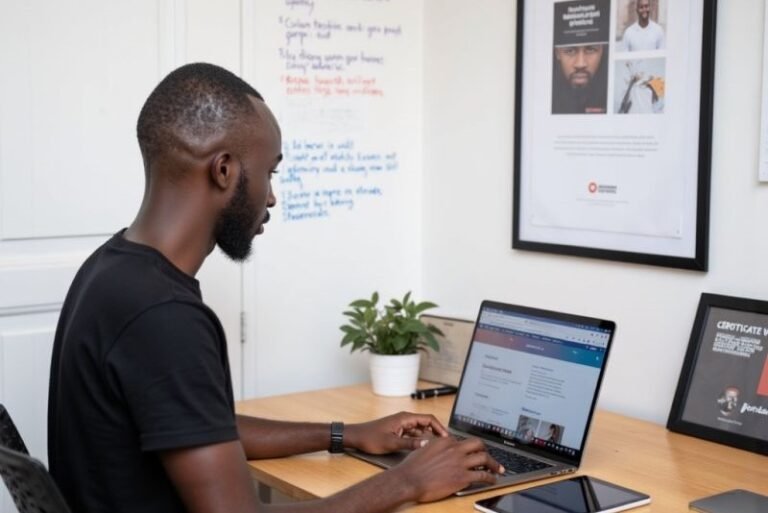What to Do If You’ve Been Freelancing for 2 Years with No Progress
What to Do If You’ve Been Freelancing for 2 Years with No Progress
Freelancing can feel like a dream come true—flexible hours, the ability to choose your clients, and the freedom to work from anywhere. However, after months (or even years) of hard work, it’s easy to feel stuck, especially when the progress seems slow or nonexistent.
So, what do you do if you’ve been freelancing for two years and haven’t seen the kind of growth you expected? You’re not alone, and the truth is, most freelancers go through a phase where they feel like they’re spinning their wheels.
Here’s the good news: It’s not too late to turn things around. By reassessing your strategy, fine-tuning your approach, and adopting new practices, you can get back on track.
Why You’re Not Seeing Progress
Before jumping into action, it’s important to identify the core reasons why you might be stuck. Here are some common reasons:
- Lack of Clear Positioning
Many freelancers are unclear about what they offer or who their ideal clients are. Without a specific niche or clear value proposition, it’s hard to stand out in a competitive market. - Inconsistent Effort
Freelancing requires consistent action. If you’re not consistently reaching out to potential clients, updating your portfolio, or improving your skills, progress can slow down. - Overworking or Burnout
Trying to juggle too many projects, chasing low-paying clients, or not setting boundaries can lead to burnout. This makes it difficult to focus on long-term growth. - Not Investing in Learning
As a freelancer, it’s essential to continuously develop your skills. If you’ve been using the same skills for two years without improving or diversifying, your growth will plateau. - Wrong Client Focus
If you’re not targeting the right clients or working for low-paying, high-demand jobs that don’t align with your expertise, it’s tough to see any significant growth.
Steps to Break Through
Now that we’ve identified the possible roadblocks, let’s explore practical steps to overcome them and start moving toward the progress you desire.
1. Reassess Your Niche and Positioning
The first step in overcoming stagnation is to figure out exactly what you’re offering and to whom.
- Choose a niche: Identify the specific area where you excel. It could be web design for small businesses, content writing for tech companies, or social media management for non-profits.
- Position yourself as an expert: Once you’ve picked your niche, make sure your personal brand and portfolio reflect your expertise. This will attract clients looking for specialized services, not just a general freelancer.
Related: How to Build a High-Income Freelance Brand in 2025
2. Upgrade Your Skills and Services
If you’ve been freelancing for two years without much progress, it might be time to level up your skills.
- Learn new skills: Keep an eye on industry trends and consider adding complementary skills to your toolkit. For example, if you’re a writer, you might want to learn SEO to offer better content marketing services.
- Get certifications: Certain fields, such as digital marketing, graphic design, or web development, benefit from certifications that show you’re up-to-date with industry standards.
Related: Top 5 Platforms to Create and Sell Online Courses in Kenya
3. Refine Your Client Acquisition Strategy
It’s easy to fall into the trap of bidding for low-paying jobs just to keep yourself busy. But that approach can only get you so far. Instead, try these strategies to attract better clients:
- Leverage LinkedIn: LinkedIn is a powerful platform for freelancers. Create an optimized profile, connect with your ideal clients, and share valuable content that showcases your expertise.
- Use networking: Start attending events (even virtual ones) that cater to your target market. Networking is one of the fastest ways to find quality clients who are willing to pay for your expertise.
- Offer a higher-value service: If you’ve been offering basic services, it might be time to pitch higher-value offerings that can command premium rates.
Related: LinkedIn Makeover: Simple Fixes That Attract Clients and Jobs
4. Build a Solid Workflow and Set Boundaries
One of the biggest mistakes freelancers make is not establishing clear workflows and boundaries.
- Set a schedule: Treat freelancing like a business by setting work hours. If you don’t create boundaries, clients will take advantage of your time, leaving you drained and unproductive.
- Automate and streamline: Use tools like Trello, Asana, or Notion to organize your projects. Automate client communication, invoicing, and other repetitive tasks.
Related: How to Build Freelance Discipline and Structure for Long-Term Success
5. Review and Adjust Your Pricing
If you’re still pricing yourself based on your initial rate, it’s time for a change. The goal is to raise your prices as you gain more experience and credibility.
- Don’t undercharge: Charge what you’re worth. Look at the quality of work you deliver and the value it brings to clients. Increase your rates accordingly.
- Offer tiered pricing: Create different packages to cater to different client needs. You can offer a basic package for smaller clients and premium packages for larger projects.
Related: How to Package Your Freelance Services for Quick Client Approvals
6. Stay Consistent and Patient
Finally, remember that freelancing success doesn’t happen overnight. It takes time to build momentum and develop a consistent income. Stay focused, keep improving your skills, and continue networking.
Success doesn’t just happen because you work hard—it’s about smart work and strategic growth.
Closing Thoughts
If you’ve been freelancing for two years without significant progress, it’s time to make some adjustments. Identify where you’ve been stuck, refine your approach, and put in the effort to improve.
Focus on refining your niche, upgrading your skills, attracting the right clients, and improving your workflow. With patience and consistency, you’ll soon break through that plateau and start seeing the success you’ve been striving for.
Internal Links:
- Why Most Freelancers Struggle—and How to Fix It
- How to Build a High-Income Freelance Brand in 2025
- Why Freelancers Should Pay Attention to Their Mental Health
- How to Build a Personal Website That Converts Visitors Into Clients
Call to Action:
If you’ve been stuck in the same place for two years, it’s time to reassess. Build a solid foundation, upgrade your skills, and attract the right clients. Start today and see how these strategies can transform your freelancing business into the success you’ve always dreamed of.






